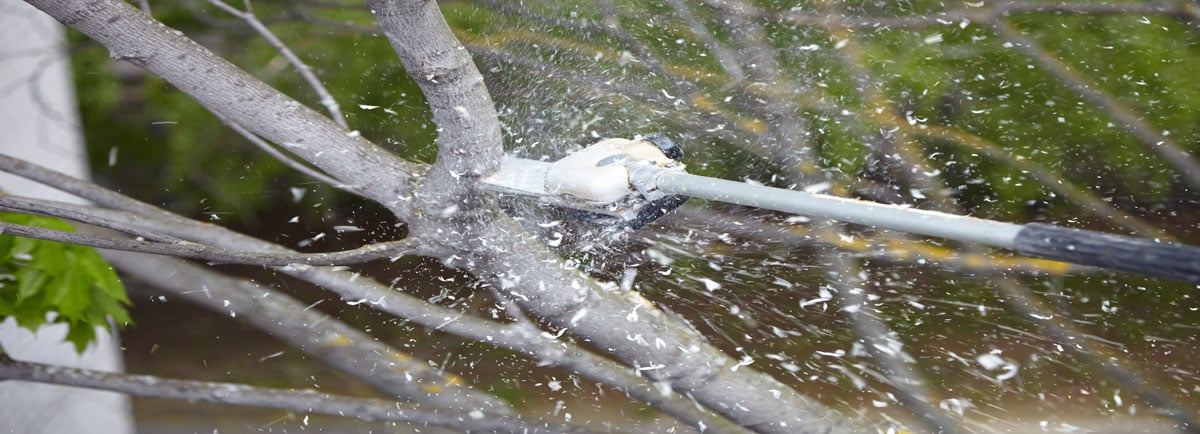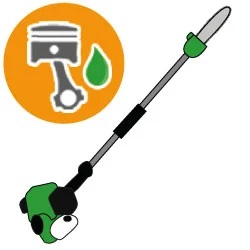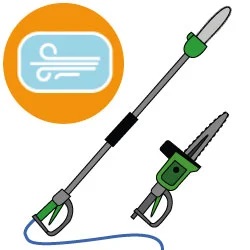A comprehensive guide to the best way to choose a pruner, with all the models, configurations and differences from pruning shears.
The Complete Guide to help you choose the Best Pruners Models, Realized and Edited by the Real Experts of Greenery and Gardening.
CONTENTS
1. Introduction
In this guide, we are going to talk about a tool employed in plants pruning, a delicate operation that stands to be crucial for orchards and vineyards, olive trees and fruit plants’ health and appearance.
The “pruners”, as the name suggests, are tools employed in the pruning process. There exist several types which are able to meet different needs, i.e. pruning thin or thick branches or pruning plants at different heights. Here is a list of the different models:
- 2/4-stroke;
- Battery;
- Pneumatic;
- Electrics (230V).
Their use is suitable for gardens, orchards, agriculture and forestry.
Additional tools whose purchase is complementary to that of pruners are PRUNING SHEARS.
2. Pruning shears main differences
Unlike pruners, shears are suitable for smaller and thinner branches cutting, the most common ones on plants. Pruners do not ensure a precise and neat cut of branches less than 2 cm in diameter, since such thin branches are not very strong and tend to bend.
Furthermore, shears are more compact and lighter, allowing operations on plants with dense branching and therefore limited operating space. They have a more compact head, and a smaller cutting apparatus if compared to pruners. They are suitable for a high cut number and branches with small diameter.
They are available in two different configuration: manual and on extension pole.
Very often, professionals employ both of them in order to cut all kinds of branches.
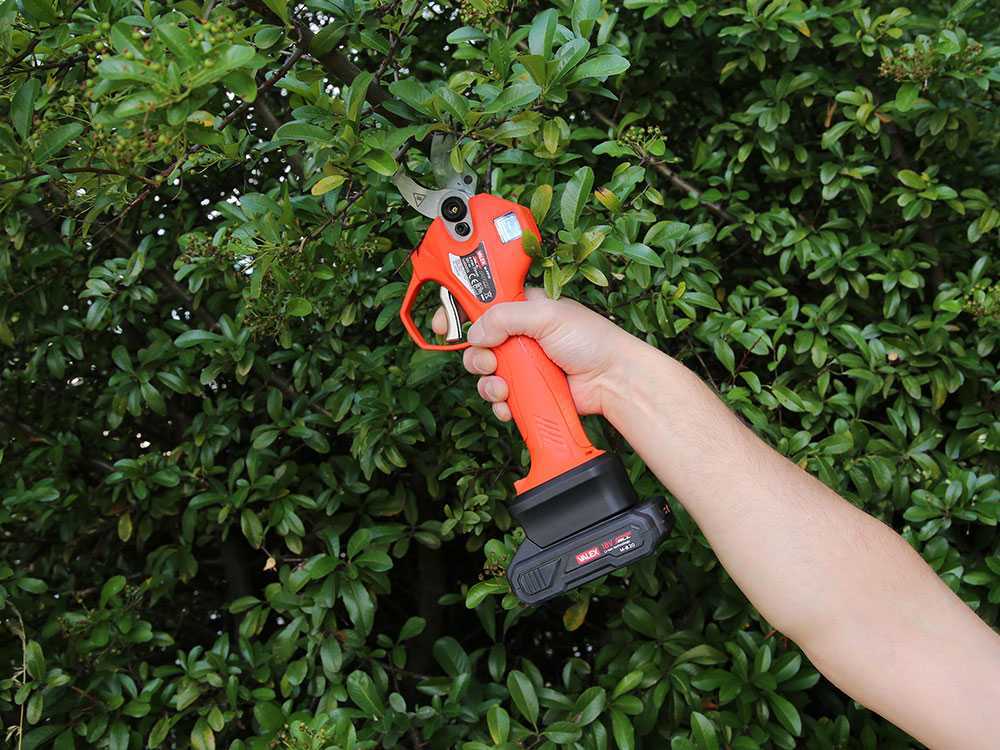
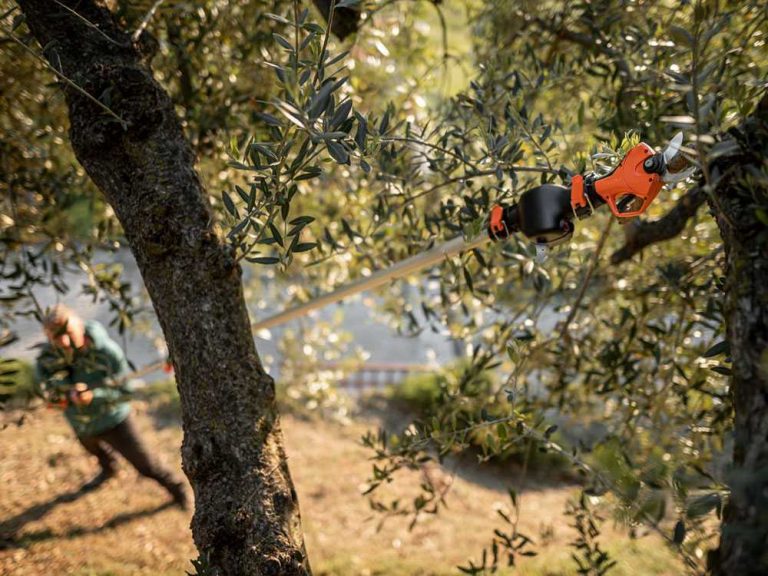
3. Telescopic pruners advantages
The use of pruners on extension pole involves several advantages for the user:
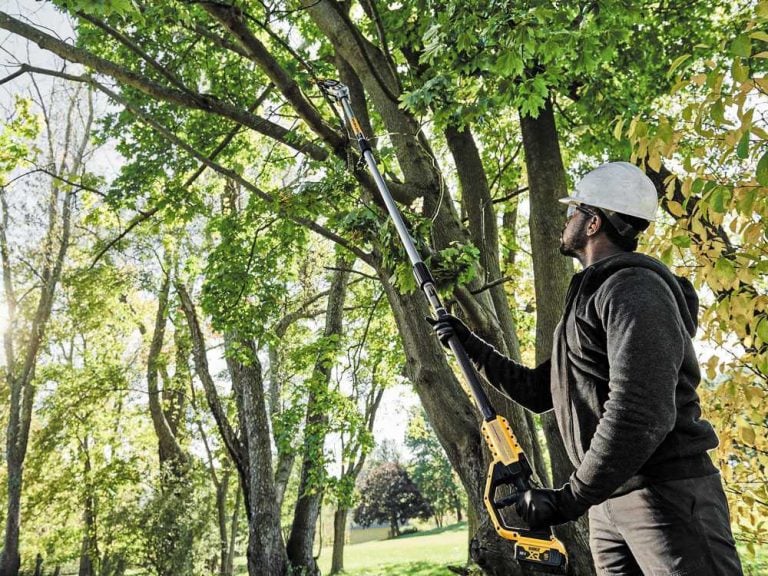

- Safety and Convenience: They avoid the use of ladders on uneven terrain, where they do not have a stable surface to stand on ( Should you opt for a pruner on extension pole);
- Time and effort saved: They are designed to make pruning faster and less strenuous;
- Complete view of the plant: Before using pruners on extension pole, users performed the cut directly on the crown, going up and down the plant in order to check the remaining points to be pruned. With pruners on extension pole, the user can stands under the plant, where he can enjoy a complete view of the plant’s structure and branching; this aspect allows him to more easily visualize the branches to be pruned.
Here as follow the plant’s benefits:
- Maintenance of its health: A regular pruning allows to maintain the plant’s health, by removing dry or diseased branches, promoting healthy growth and boosting flowering.
- Regularisation of the fruiting process: Correct pruning prevents too much fruit from growing on the plant, which, by absorbing more nutrients, would lead to a lower fruiting yield the following year.
4. Configurations
The main categorisation for these tools concerns their configuration during use.
They can be employed in manual or on extension pole versions. Furthermore, there are models which can be employed in both versions.
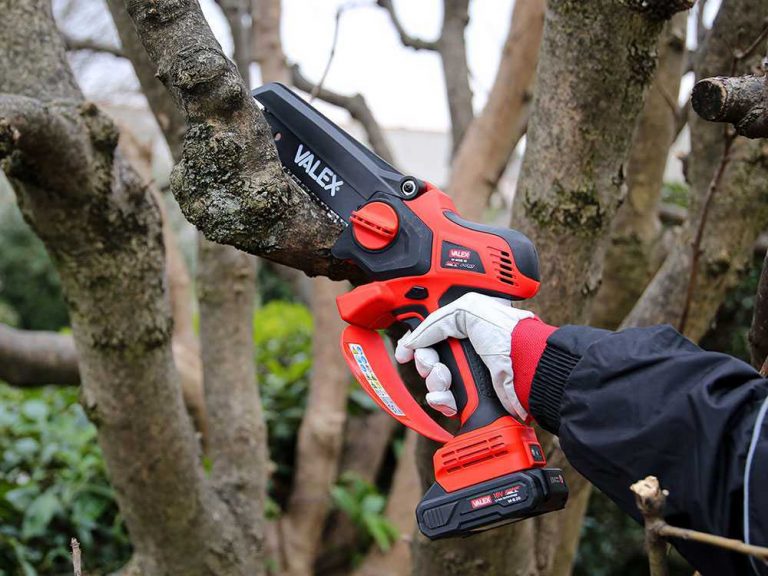
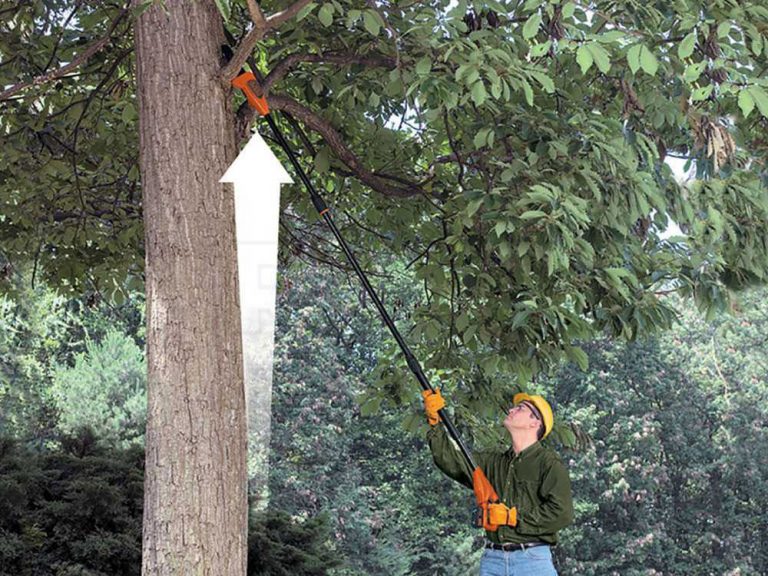
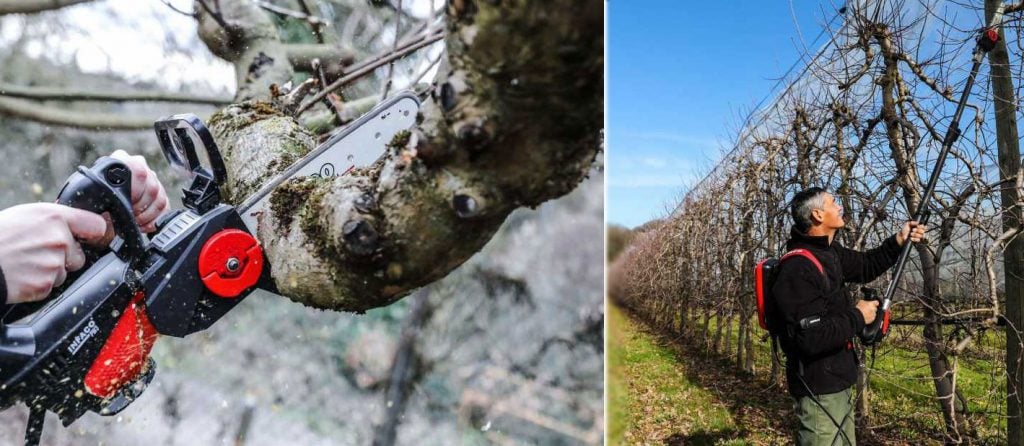
Manual configuration are lighter than the ones on extension pole and they can be used in narrower and uncomfortable places.
Extension pole configuration eliminates the use of ladders: with this kind of tool, the user performs the cut directly from the ground.
Extension poles can be at fixed-length, telescopic, i.e. with a length that can be increased and decreased as required, and separable into two pieces, with the possibility to split the pole into two separate parts and add an additional extension pole only if required.
To sum up, the manual configuration is preferred by those who want to perform more direct and faster operations, while the pole configuration is chosen by those who prefer to have a more complete view of the plant. It should be noted that the choice between one or the other version is highly personal.
5. Configuration on extension pole
Pruners with configuration on extension pole can be divided into 3 different categories, which differ from each other according to the type of pole:
- Configuration on telescopic pole;
- Configuration on fixed pole;
- Configuration on two-pieces pole.

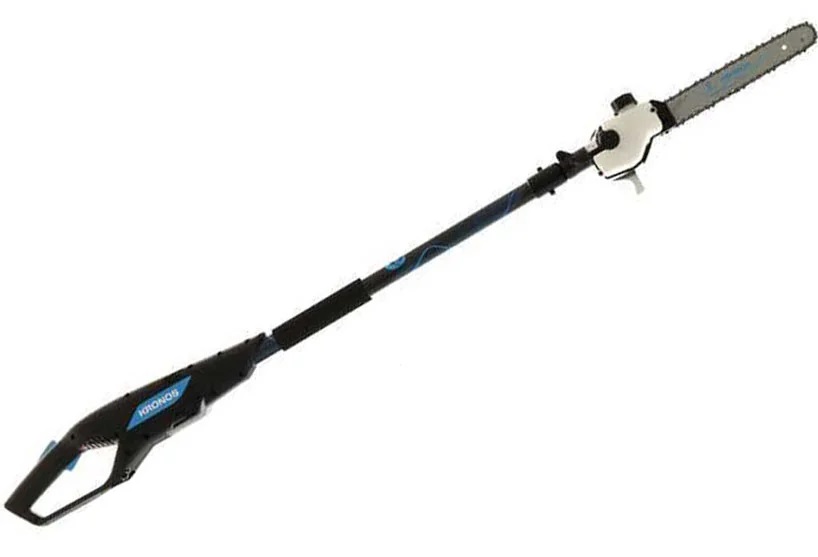
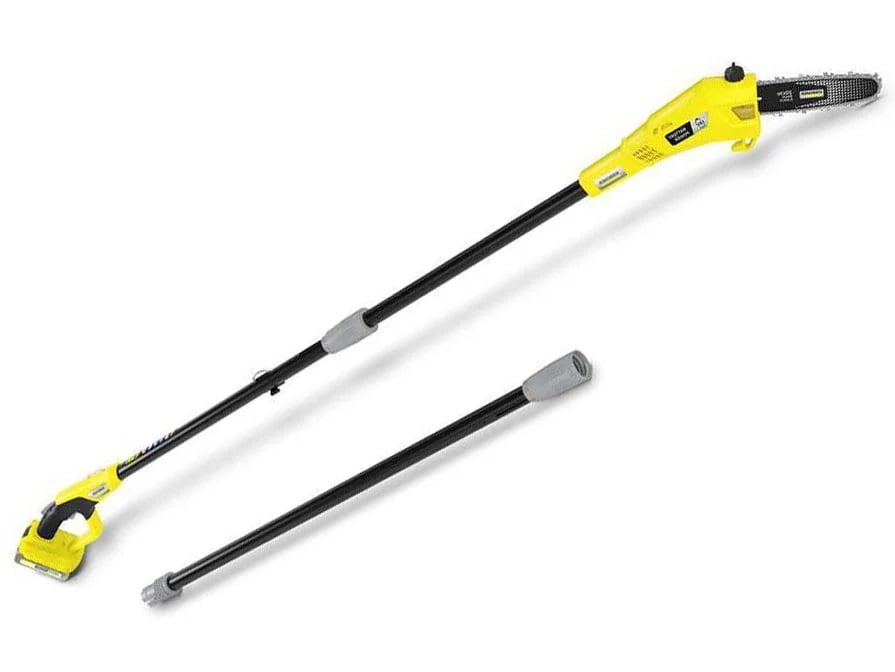
5.1 Configuration on telescopic pole
Configurations with telescopic poles allow the length of the pole to be adjusted in different sizes by means of a special release system.
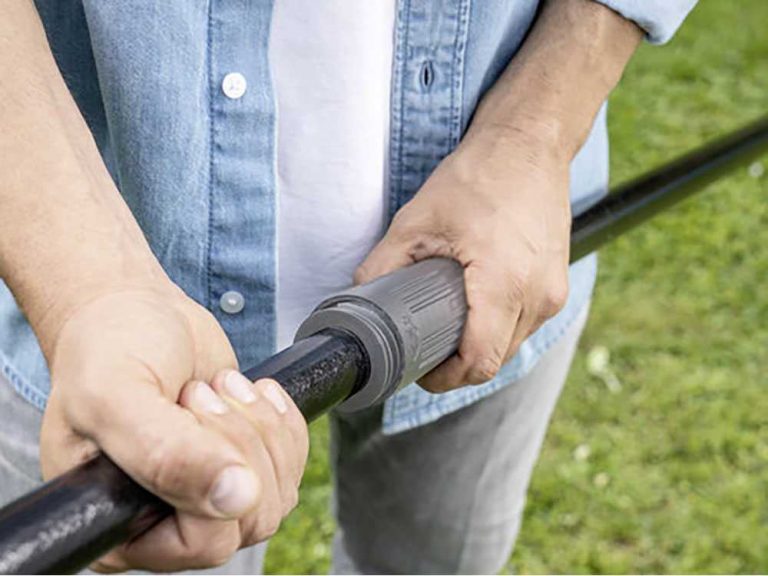
This is a configuration suitable for professional use; the poles can reach lengths of 3.5 to 3.8 metres and extend in height up to 5.5 metres when in the hands of the operator.
However, they are also heavier than the fixed ones.
The poles can be extended through a simple release system, which allows them to be extended extremely quickly.
5.2 Configuration on fixed pole
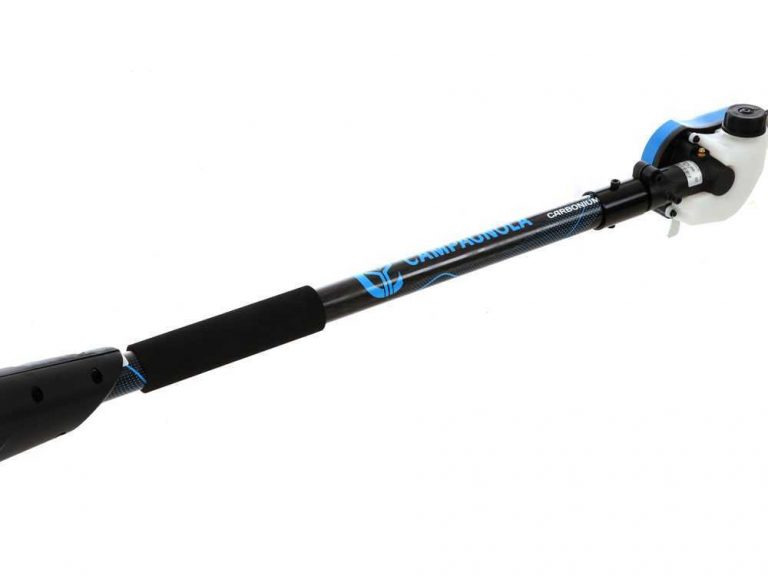
By contrast, fixed pole configurations still allow high branches to be reached, but without the possibility of increasing or decreasing the length of the pole.
They are lighter than those with telescopic poles but reach heights of 2 metres maximum, 4 metres when in the hands of the operator, and do not have the release and coupling system to increase their extension.
5.3 Configuration on two-pieces pole
The two-piece separable pole configurations not only enable the operator to split the pole into separate parts, but also allow an additional extension pole to be quickly attached to the pruner, which increases the working height of the machine.
This configuration, as well as the telescopic pole configuration, is equipped with a quick release system to make the assembly and disassembly of the extension as easy as possible.
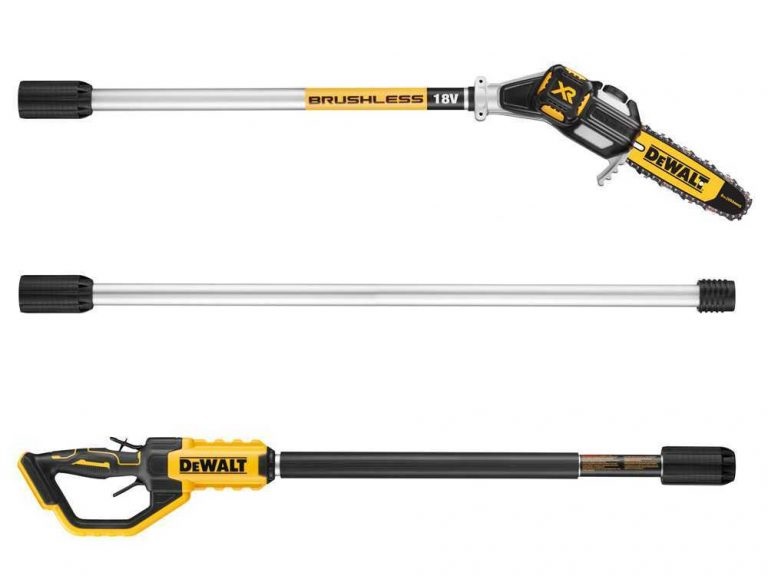

6. Different types
Let’s have a look at the table below, where the applications of the main categories are summarised. These will be analysed later.
| Machine weight: | Power | Configuration on extension pole | Manual configuration | Category Level | Maintenance level | Price | |
| 2/4 stroke pruners |  | 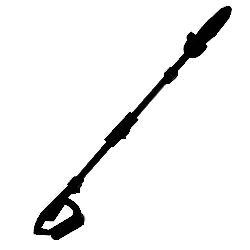 |  | Professional | 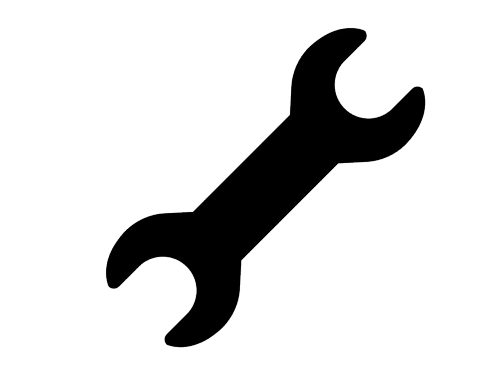 |  | |
| Pneumatic pruners |  |  | 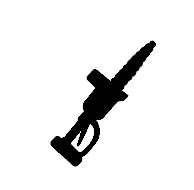 | Professional |  |  | |
| Battery-powered pruners |  |  |  | Semi-professional |  |  | |
| Electric Pruners (230V) | 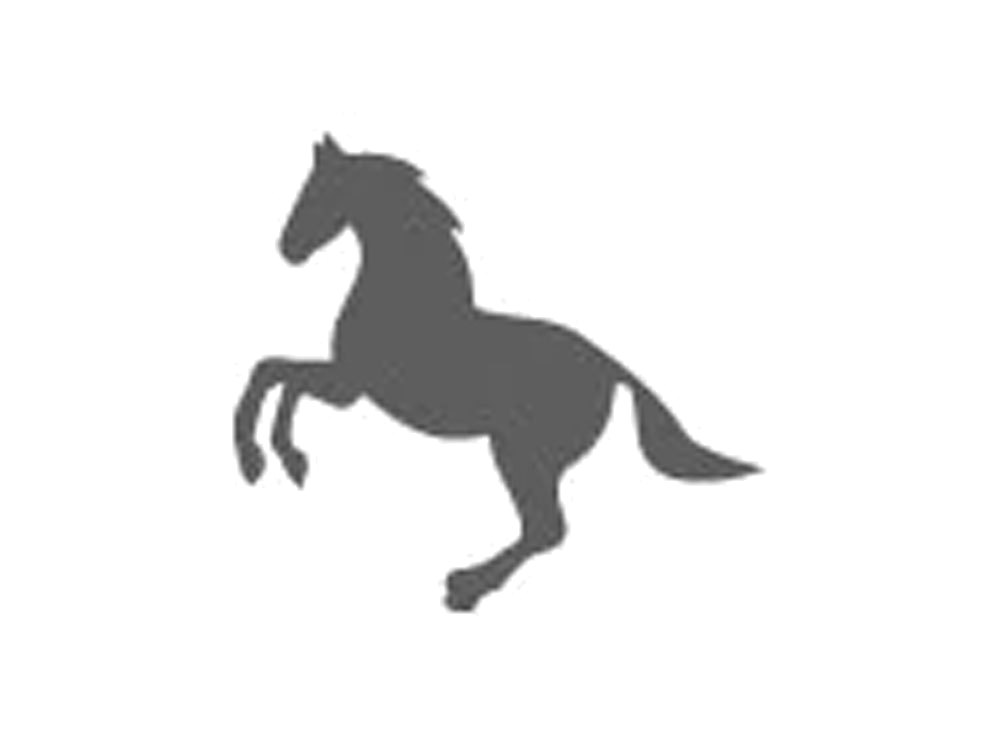 |  |  | Hobby |  |  |
6.1 2/4 stroke pruners
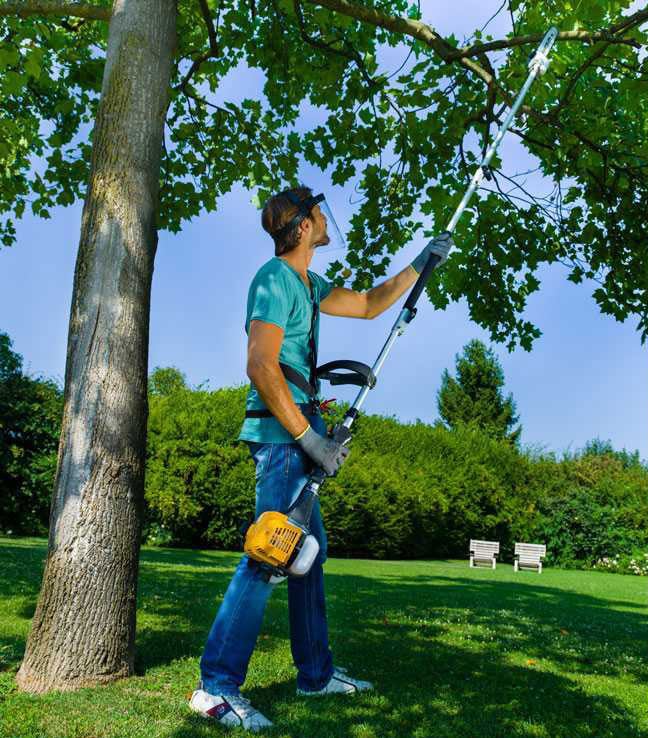
2/4 stroke pruners are the most powerful among all pruners categories. They are the most efficient choice for heavy-duty work and cutting large diameters. However, 2/4 strokes engines also have less positive aspects: they are noisier, require more frequent maintenance than electric pruners, and the engine releases polluting exhaust gases that are unavoidably inhaled by the operator.
The most ideal displacement ranges from 23 to 28 cc. With this power, you will have an excellent balance between weight and power. With higher displacements you would have too much power to operate a bar that does not exceed 25-30 cm, employed to cut branches that never exceed 20 cm in diameter.
The engine size also affects the overall weight of the machine; an engine with an excessively large displacement would make the pruner too heavy, thus rendering it unsuitable for long cutting sessions.
Here follows a short table summarising the Advantages and Disadvantages of 2/4 strokes models.
| ADVANTAGES | DISADVANTAGES |
| Higher power | Higher maintenance required |
| It allows to cut branches with a diameter up to 20 cm | Polluting emissions |
| Noise emissions | |
| Greater weight of 2/4 stroke engine |
Machines that can displace larger capacities and can also perform pruning work at the same time are the multi-tool brush cutters.
6.2 Electric Pruners (230V)

Electric pruners (230V) are light-weight machines, which need to be connected to an electric socket to operate and they require very little maintenance.
They represent a more environmentally friendly alternative to 2/4 strokes models as they do not emit any pollutants.
They are much quieter and more comfortable to use, but are not able to deliver the same power as a 2/4 stroke engine.
| ADVANTAGES | DISADVANTAGES |
| Light-weight | They need an electric socket |
| Zero emissions | Less power |
| Silent | Small, dedicate for hobby work only (in the garden) |
| Low maintenance: |
6.3 Battery-powered pruners

Battery-powered pruners are tools powered by a rechargeable battery. They represent a compromise between 2/4 stroke and electric models, as some of them may be exclusively employed for hobby use, while others may resemble 2/4 strokes models in terms of cutting performance.
These tools are lighter and more portable than 2/4 stroke or electric models; moreover, they can be used anywhere, even in places where there is no power source available.
They do not require power cables, are quiet and do not emit polluting exhaust gases.
However, since they depend on a rechargeable battery, they have a limited service life, a restriction that can be overcome by purchasing additional batteries. They may not be suitable for heavy work or for pruning large trees.
| ADVANTAGES | DISADVANTAGES |
| Light-weight | Less power (hobby use models) |
| Zero emissions | Running time |
| Silent | |
| They can be used everywhere | |
| Low maintenance: |
6.4 Pneumatic pruners
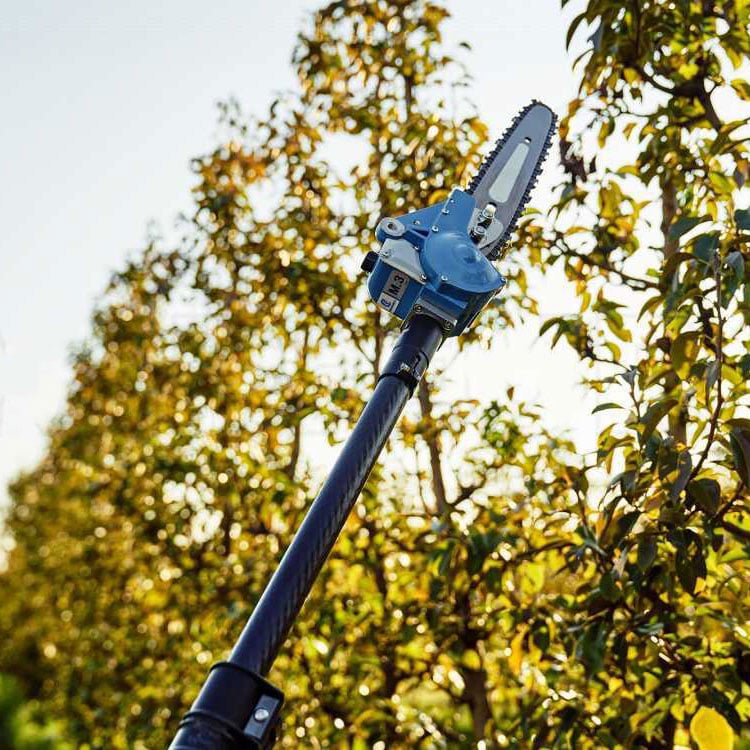
Compressed air pneumatic pruners are powered by air that flows through a tube connected to an air compressor. This one needs to be placed close to the working area.
Usually, they are employed for the most heavy and demanding works on large-sized crops, as they allow faster and most effective operation.
They can be used in both versions, manual and on extension pole to allow cutting operation in every plant variety.
| ADVANTAGES | DISADVANTAGES |
| Higher power | They need to be connected to an air compressor |
| Light-weight |
7. Multi-tool brush cutters

As aforementioned, multi-tool brush cutters represent a more powerful alternative if compared to 2/4 stroke pruners.
These products are already equipped with different accessories that can be attached according to the operations to be made. If required, they can turn into:
- Pruner;
- Brush cutters;
- Hedge trimmers.
Frequently, the poles can be separated into two pieces in order to make transport easier.
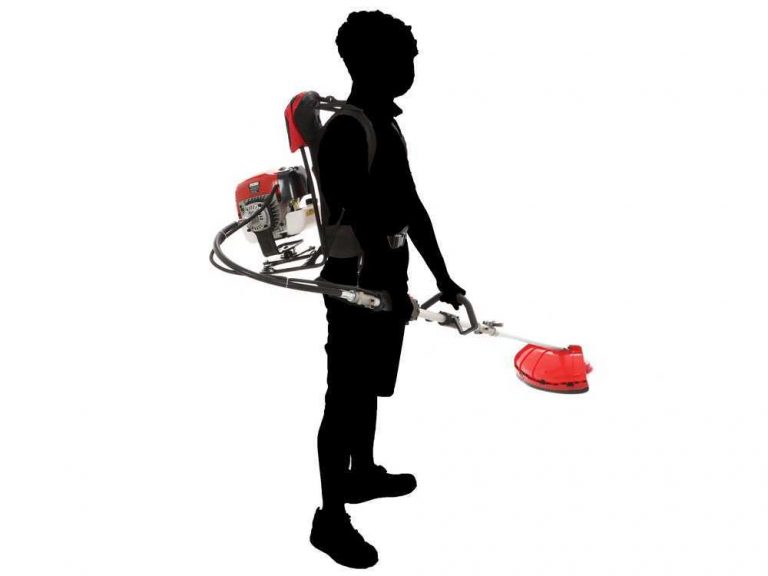
On the market, you can find electric (230V), battery-powered, 2 or 4 strokes multi-tool brush cutters.
A fundamental equipment for multi-tool brush cutters is the motor’s backpack.
This backpack holds the machine’s motor, but thanks to the padded back and support straps, the user can easily move without excessively tiring the back.
8. Blade length
Different cutting blade lengths affect the level and performance of the machine. We rank the usage level according to the length of the cutting blade:
| 6.5 – 16 cm blade | Hobby use |
| 16 – 20 cm blade | Semi-professional use |
| 22 – 30 cm blade | Professional use |

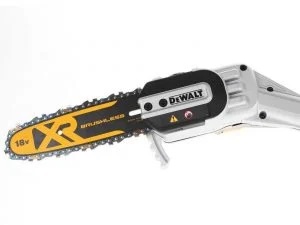

9. Adjustable head
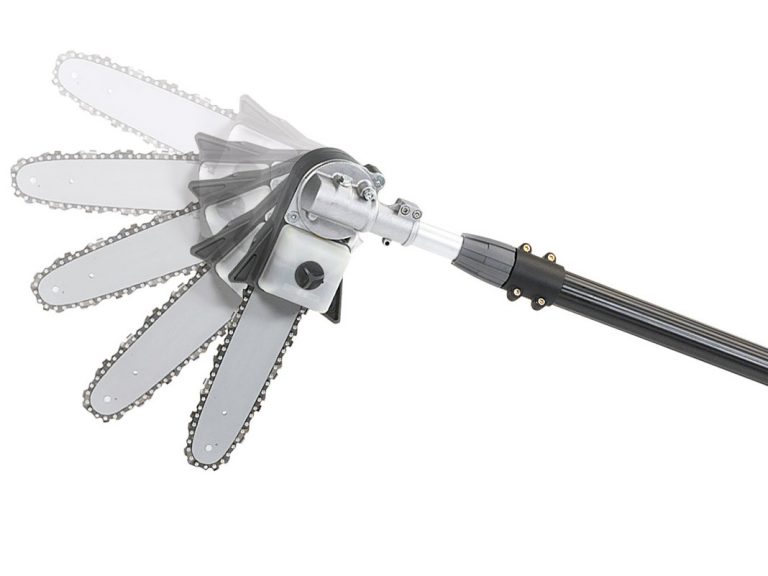
The adjustable head is a specific feature that allows the pruner head to be tilted in different positions in order to make cuts at the desired angle.
Thanks to the different available positions of the head, the operator can keep the cutting profile closer to the main branch, improving the results of the entire operation.
| The inclination can often facilitate the operator during cutting operations, as he can sometimes lean the machine directly on the branch, thus unloading part of the pruner’s weight onto it. |
10. Power and running time
Among the pruners’ different categories, the technical data to consider vary mainly according to their power supply.
Here as follows you can find the main data contained in the data sheets of the different pruner models:
10.1 Displacement
If we talks about this data, we’re considering one of the main technical data for 2-4 stroke pruners.

Indeed, displacement indicates the total volume of an engine’s cylinder, and is proportional to the power the engine can deliver.
Higher displacement guarantees greater power, but also higher machine’s weight.
Let us then make a small classification of the various engine displacements’ power and their influence on the total weight.
| Cubic capacity: | Power | Weight |
| 20-25 cc | 1-1.4 HP | 6-8 Kg |
| 26-31 cc | 1-1.4 HP | 8-9 Kg |
| 32-43 cc | 1.2-1.7 HP | 8-9 Kg |
| 44-58 cc | 1.7-3.5 HP | 9-10 Kg |
10.2 Voltage and Amperage
Two of the most important technical data when choosing a battery-powered pruner can be linked respectively to power and autonomy.

Voltage is the measurement unit for electrical voltage and is generally referred to as the power output of the machine; a higher voltage will therefore correspond to greater power.
V = voltage
Instead, amperage is the measurement unit of the electric charge and represent the charge amount required to deliver the current of one ampere for one hour; it is commonly associated with the running time.
A = amperage
Consequently, greater amperage corresponds to higher machine running time.
Here we attempt to draw up a classification based on the power and running time of the various models.
| Voltage: | Amperage: | Nominal power: |
| 10-15 V | 2 – 4 Ah | 250–300 W |
| 16-20 V | 2 – 5 Ah | 250-350 W |
| 21-30 V | 2 – 5 Ah | 350-600 W |
| 36-48 V | 2 – 5 Ah | 1000-1500 W |
| 50-60 V | 5 – 16 Ah | 1000-1500 W |
10.3 Watts

They indicate the power of the electric pruners. The Watt data is not always included in the various product data sheets, so how should it be calculated?
W = V x A (watt = voltage x amperage)
Example: If considered a battery-powered pruner with 21V and 2 Ah, the power will correspond to the result of multiplying 21, the Volts, and 2, the Amps:
21 x 2 = 42 Watt.
| Important: Never compare an electric pruner watts with a battery-powered pruner watts, as the computational logic is different. Generally, we suggest to perform the aforementioned calculation and then, to compare it with the various power. |
11. Automatic lubrication
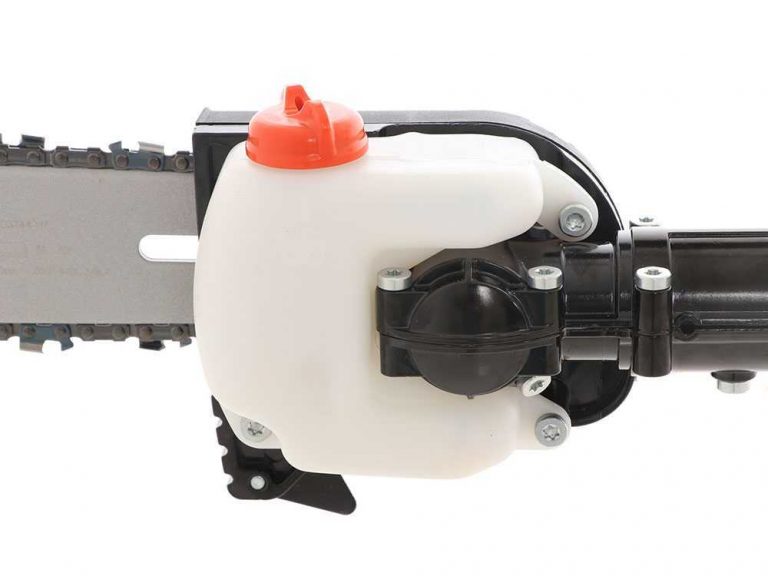
While performing, the chain on the cutting bar reaches high speeds, thus creating overheating by the blade/chain. Its lubrication allow to cold the stressed section and make the chain sliding bar easier.
Generally, a small tank containing lubricating oil is integrated on the pruner’s head to allow easy access and fast check of its level.
| Small tip: It is recommended to use a high-viscosity vegetable oil, so that it can optimally reach all parts of the machine and reduce pollution. |
12. Side chain tensioner
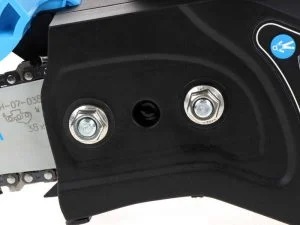
The chain tensioner system is used to “tighten” or “loosen” the chain on the cutter bar. It is positioned to the side of the machine handle.
What is required to use it? To use a chain tensioner you only need a small spanner, which is supplied with the product.
By simply turning a small screw, the degree of chain pull can be increased or decreased.
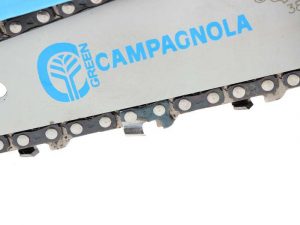
Attention: Never overdraw the chain, as this could break it or lead to its malfunction. In fact, the chain has to be pulled up to a precise tension point, which can easily be checked by hand.
For optimal performance, the chain must fit tightly against the bar, but at the same time, if pulled with the fingers, there must leave a slight gap between itself and the bar.
13. Brands
Before purchasing a pruner, whether manual or on extension pole, it is very important to know the brand leaders of the industry, as a well-known and renowned brand is always associated to quality, reliability and performance. In this pruners’ purchasing guide we tried to sum them up like this.
For each category, we can suggest different brands:
- 2/4 stroke pruners: Bluebird, Shindaiwa e Greenline.
- Electric pruners: Gardena, Ryobi e Einhell.
- Battery-powered pruners: Makita, Campagnola, Zanon, Worx



